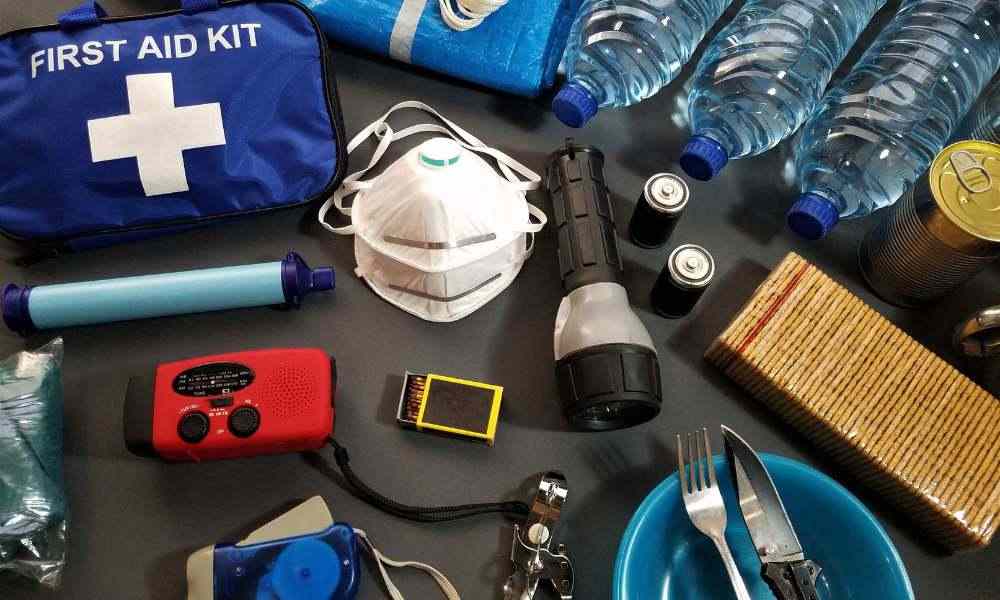Storm Kit: 72 Hours
Why post about a storm kit? Why not post tips on how to function in a brutal heat wave or how to fry an egg on a sidewalk?
After a weeks-long drought and a series of unfulfilled shower warnings, few reached for their umbrellas after CP24 predicted a severe rainstorm on Saturday.
In fact, the first (and only) reply on Twitter was: “You’ve been wrong about rain for weeks now. Why should we believe you today?”
This time, however, there were results. The rain fell for hours, causing flooding, damage and power outages throughout the city. In Brampton and Oshawa, there were even reports of tornadoes. By nightfall, storm warnings across southern Ontario were finally lifted. On Tuesday, it rained again from the earliest hours until late in the afternoon.
With summer storms back in force, we’d like to help you get ahead of the game.
Everyone should have a special ‘storm kit’ that contains exactly what they’ll need for 72 hours – three days – without power.
This is the view of Toronto Hydro, the Canadian Red Cross, the Toronto Office of Emergency Management, and Public Safety Canada, among others, but how many of us actually have one?
The Kit
Every member of our team did. Handyman Shawn is an outdoors type, and when he isn’t hanging pictures, patching drywall, or installing shelves, he goes for long hikes up north. He told us: “If you were going camping, what would you take? Those camping backpacks are really just large emergency kits.”
It isn’t difficult. Most of the recommendations are very affordable and very easy to find – in fact, there’s a very good possibility that you already have all or most of them.
- Food and water – Be sure to have a three-day supply of bottled water (four litres per person per day) and ready-to-eat food. Prevention, the popular health magazine, has an excellent article listing 49 highly nutritional, ready-to-eat foods.
- Medical supplies – Have a first-aid kit and a one-week supply of all necessary medicines (including prescription drugs). Don’t forget a cooler bag with ice packs to keep all of the medications cold.
- Hygiene supplies – You will of course need a supply of toilet paper, hand sanitizer, toothbrushes and dental floss.
- Tools – Make sure you have the basics – hammer, screwdrivers, pliers, wrench, fastener, and a utility knife. With a multi-tool, you can accomplish a number of essential functions without weighing down your storm kit.
- Clothing – Pack an extra pair of clothing and shoes for everyone, as well as sleeping bags and warm blankets for each person.
- Electronics – You’ll need flashlights and a radio – crank or battery-powered. If they’re battery-powered, change them at least once a year.
There are some survivalist-oriented stores in Ontario, but none operating in Toronto. Army surplus stores stock survival gear, however.
Aftermath
After the clouds cleared, CP24 stoically surveyed the fallout. Areas were flooded and 6,800 people lost power. Trees that had stood for decades collapsed – onto sidewalks, streets and cars.
Our team received a number of calls to assist homeowners and businesses after the weekend. We helped restore damaged drywall and remove damaged material, along with a number of other small fix-ups people needed in the aftermath.
In Brampton, one man described what he saw upon returning home:
“When I came (home) I saw the roof was off, my whole patio set was gone,” the man said. “Right now my whole house is completely flooded inside with the rain. It’s coming down from all three levels – all the rooms are soaked.
“The shingles are all gone from the roof. My BBQ is in the neighbour’s yard. All the trees are down on the side of my neighbour too.”
Storms are much like life; they’re unpredictable. The best you can do is plan ahead, and a well-prepared storm kit is the perfect way to do so.




